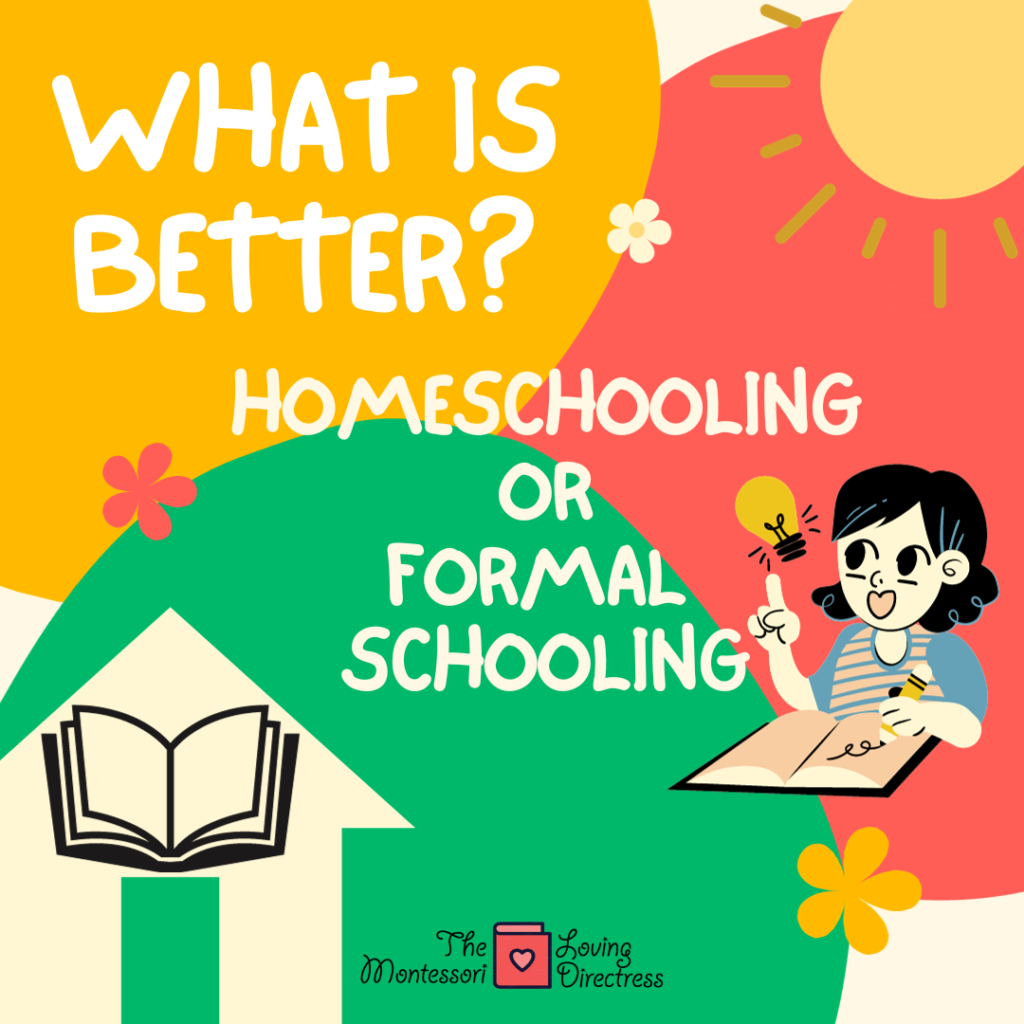Introduction:
Homeschooling, as an educational practice, has been around for centuries. Historically, it was the primary method of education for most children until formal schooling became more widespread in the 19th century. In the United States, early settlers often educated their children at home due to a lack of formal schools.
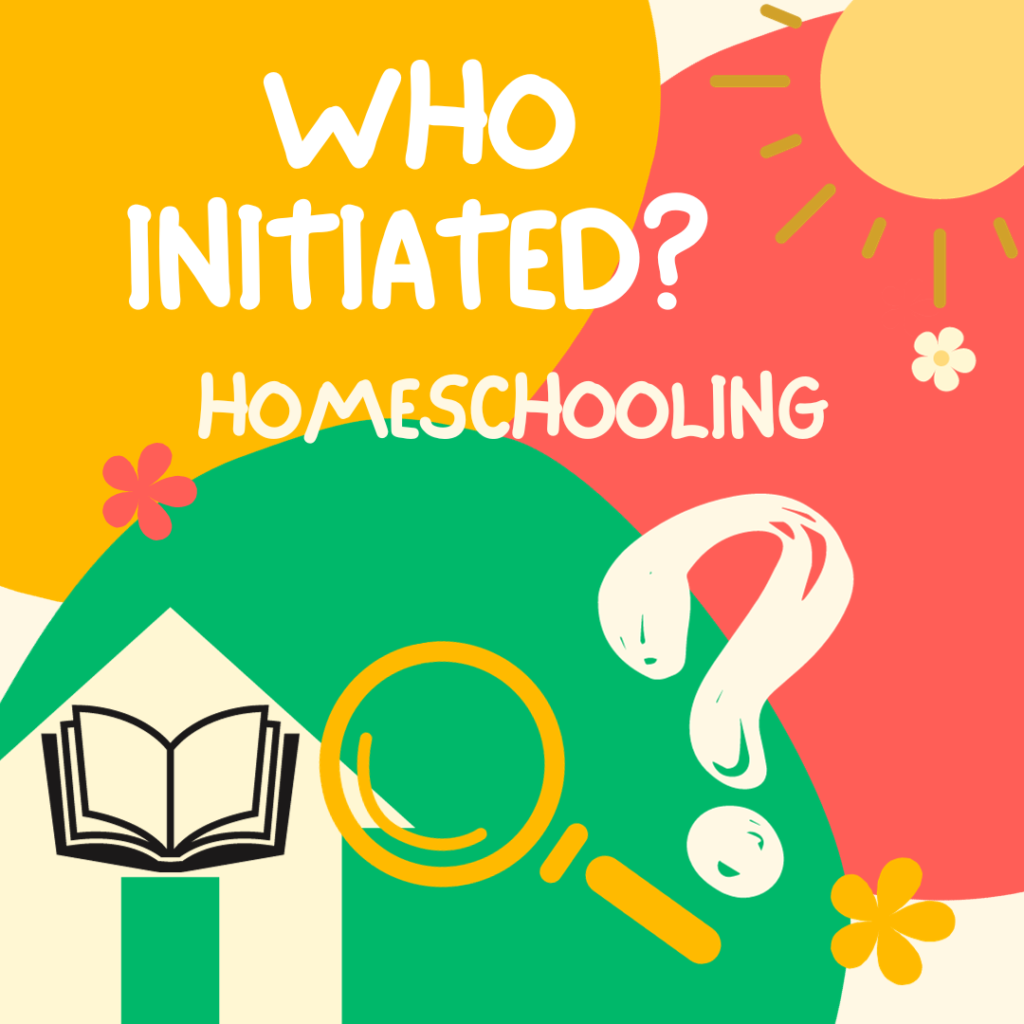
Who Initiated Homeschooling (History)?
In the modern context, the homeschooling movement gained momentum in the 1960s and 1970s, primarily led by educational reformers, philosophers, and activists. Notable figures such as John Holt, who wrote books like “How Children Fail” and “How Children Learn,” advocated for homeschooling as a means to provide a more personalized and effective education for children.
During this time, some parents were dissatisfied with the traditional education system and sought alternatives that catered better to their children’s needs. This dissatisfaction, combined with a desire for more individualized instruction and the belief that parents were best suited to understand their children’s learning styles, contributed to the resurgence of homeschooling in the modern era.
The homeschooling movement has continued to grow and evolve, influenced by various educational philosophies, technological advancements, and changing societal perceptions about alternative forms of education.
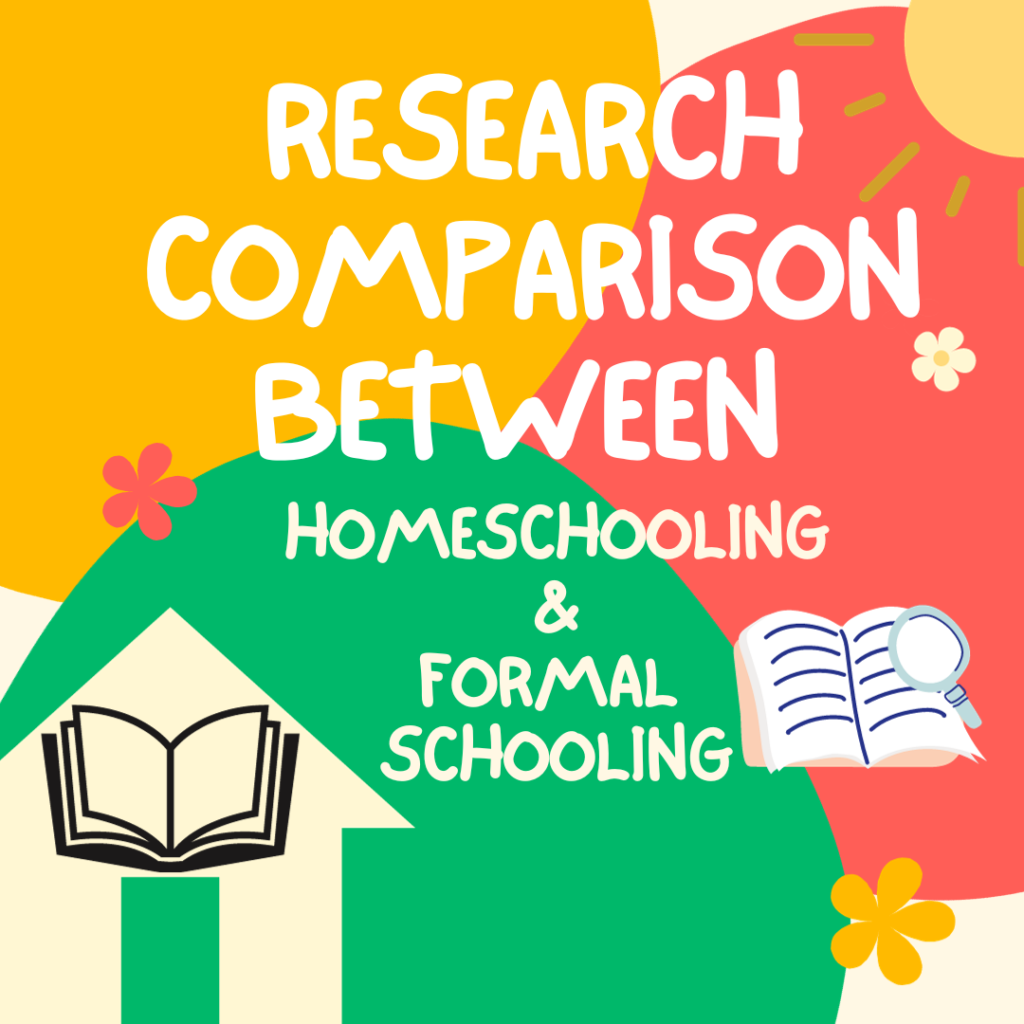
Research Comparison between Homeschooling & Formal Schooling:
Research on the comparison between homeschooling and formal schooling often presents a mixed picture, as findings can vary based on methodologies, contexts, and individual circumstances. However, some studies shed light on different aspects of both forms of education:
Academic Achievement:
- Researcher: Dr. Brian Ray, National Home Education Research Institute.
- Study: Several studies conducted by Dr. Ray and his team have found that homeschooled students often perform above average academically compared to their formally schooled peers. His research suggests that homeschooling allows for personalized instruction and a tailored curriculum, contributing to higher academic achievement.
Social Development:
- Researcher: Dr. Michael Cogan, University of St. Thomas.
- Study: Dr. Cogan’s research compared socialization among homeschooled and formally schooled children. His findings indicated that homeschoolers tend to have higher levels of social, emotional, and psychological well-being. Contrary to the stereotype of limited socialization, homeschooled children often engage in diverse social activities and have strong family relationships.
Parental Satisfaction and Involvement:
- Researcher: Dr. Patricia Lines, National Center for Education Statistics.
- Study: Dr. Lines’ research explored parental satisfaction and involvement in homeschooling. Her findings suggested that parents who homeschool are generally highly satisfied with their decision and are more involved in their children’s education compared to parents of formally schooled children.
College Readiness and Success:
- Researcher: Dr. Michael C. Martin, University of Arkansas.
- Study: Dr. Martin’s research examined the college readiness and success of homeschooled students. His findings indicated that homeschoolers have higher college GPAs and graduation rates compared to their traditionally schooled counterparts.
While these studies highlight certain advantages of homeschooling, it’s important to note that research in this field is ongoing and evolving. Factors such as parental involvement, individual student needs, teaching styles, and regional regulations play significant roles in the outcomes of both homeschooling and formal schooling. Ultimately, the “better” option depends on what aligns best with the needs and values of the family and the child.
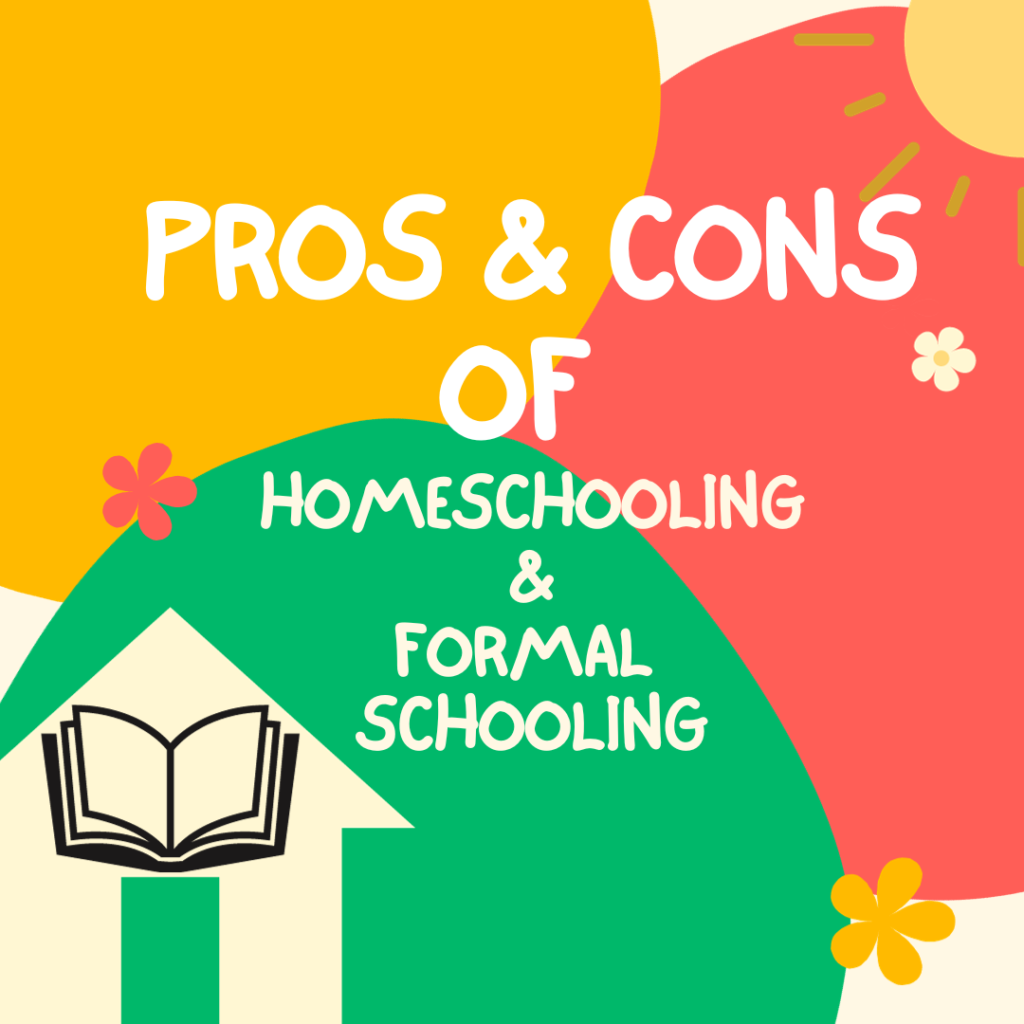
Homeschooling VS Formal Schooling Pros & Cons:
Here’s a breakdown of the pros and cons of homeschooling compared to formal schooling:
Homeschooling:
Pros:
- Customized Learning: Tailoring education to a child’s specific pace, interests, and learning style.
- Flexible Schedule: Freedom to create a schedule that suits the family’s lifestyle and allows for personalized learning times.
- Individual Attention: One-on-one instruction enables immediate clarification and personalized support.
- Stronger Family Bonds: Increased time spent together can strengthen familial relationships.
- Safe Learning Environment: Control over the educational environment, potentially reducing exposure to negative influences.
Cons:
- Limited Socialization: Potential limited exposure to diverse social experiences and interactions with peers.
- Limited Resources: Access to specialized resources and facilities might be restricted compared to formal schooling.
- Parental Responsibility: Requires a significant time commitment and dedication from parents or guardians.
- Narrower Perspectives: Exposure to fewer viewpoints compared to the diverse environment of formal schools.
- Lack of Accreditation: Some colleges and institutions may require additional documentation or testing for homeschooled students.
Formal Schooling:
Pros:
- Social Development: Opportunities for social interaction, diverse friendships, and exposure to varied perspectives.
- Professional Instruction: Access to qualified teachers specializing in different subjects.
- Structured Environment: Provides a structured routine that prepares children for future schedules and deadlines.
- Access to Resources: Availability of facilities, libraries, extracurricular activities, and diverse educational materials.
- Accreditation: Schools often provide recognized accreditation that is universally accepted for future education.
Cons:
- Less Individual Attention: Larger class sizes may result in less individualized instruction for each student.
- Limited Flexibility: Less flexibility in curriculum and learning pace compared to homeschooling.
- Bullying or Negative Social Dynamics: Potential exposure to negative social pressures such as bullying.
- Standardized Testing Pressure: Emphasis on standardized testing might overshadow creative learning.
- Limited Personalization: Challenges in catering to individual learning styles and needs due to standardized approaches.
Both homeschooling and formal schooling have their advantages and drawbacks. The choice often depends on the child’s needs, family circumstances, educational philosophy, and available resources.
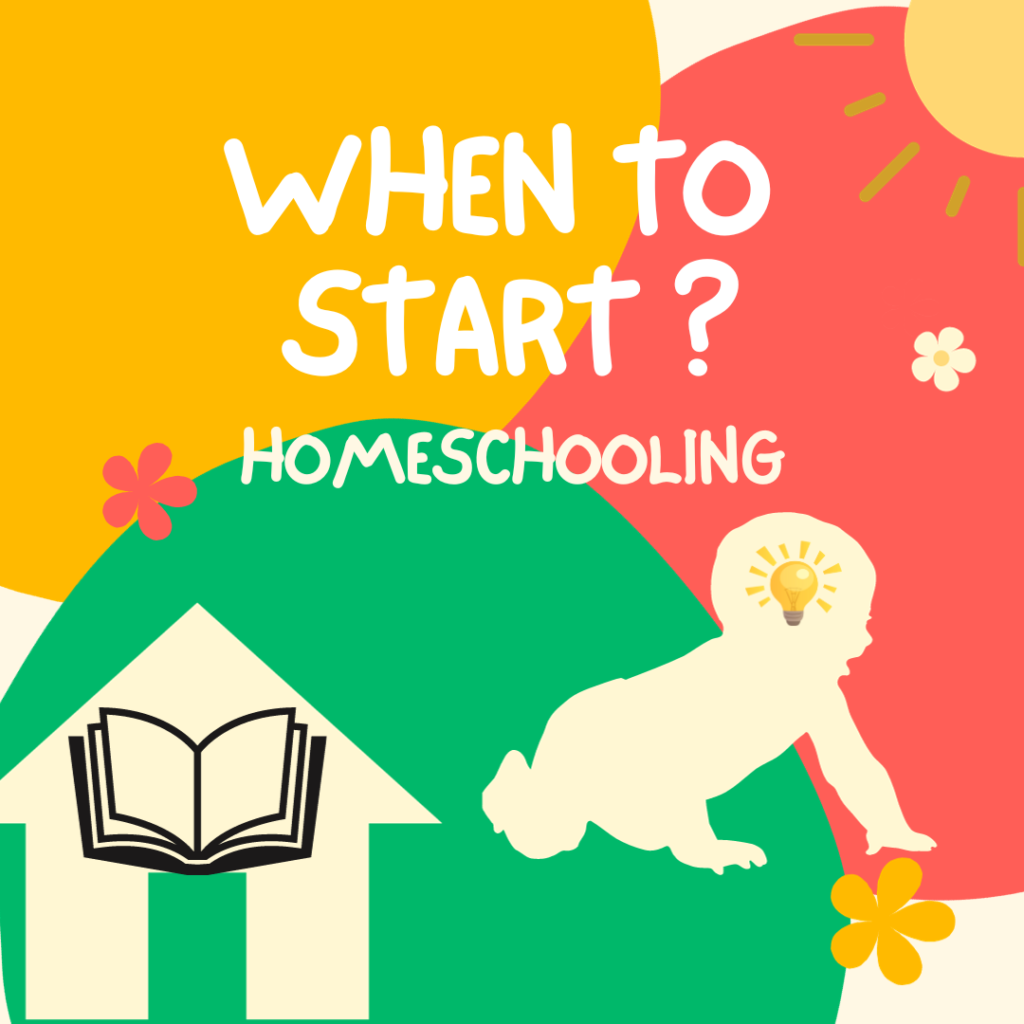
When to start Homeschooling?
The decision to start homeschooling can vary based on personal circumstances, educational philosophies, and the child’s developmental readiness. While there isn’t a definitive age to initiate homeschooling, many families begin when their child reaches preschool or kindergarten age, typically around 3 to 5 years old.
However, it’s essential to consider a few factors before starting homeschooling:
Developmental Readiness:
Ensure that your child is developmentally ready for structured learning activities. At around age 3 or 4, children start showing signs of readiness for simple learning tasks and activities.
Family Dynamics:
Consider the family’s lifestyle, routines, and commitments. Homeschooling requires time, dedication, and flexibility from the parents or guardians involved.
Legal Requirements:
Be aware of the legal requirements for homeschooling in your region. Some places have specific age or grade-level requirements for homeschooling.
Child’s Readiness for Learning:
Every child is unique. Some may show early signs of curiosity and eagerness to learn, while others might need more time and exposure before structured education begins.
Educational Philosophy:
Your educational philosophy and approach to homeschooling may influence when you start. Some families prefer to wait until the child is older to begin formal instruction, while others start with a more relaxed, play-based approach from an early age.
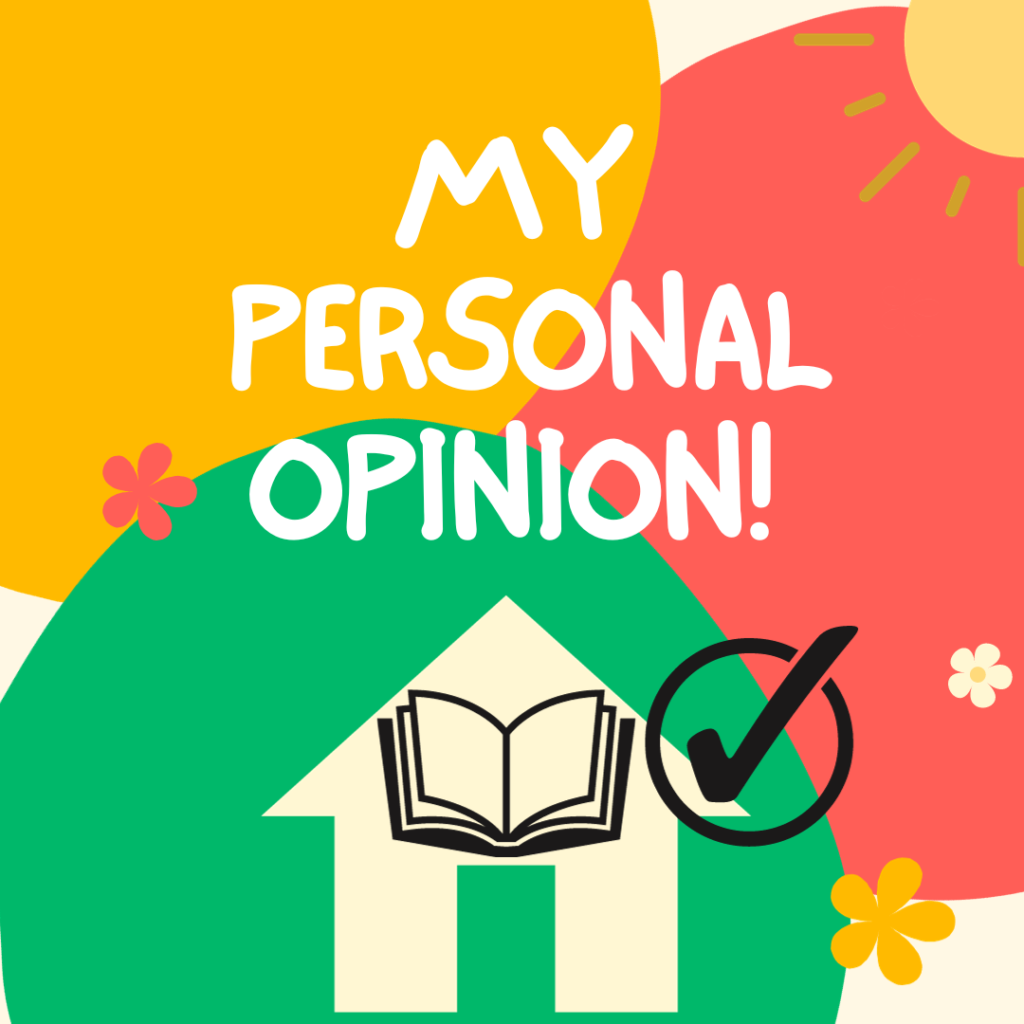
Why I Prefer Homeschooling over Formal Schooling?
Personalized Education:
I prefer homeschooling because it allows for a more personalized and flexible approach to education. As a parent, I value the ability to tailor the curriculum and learning pace to suit my child’s unique needs and interests. Research by Dr. Brian Ray from the National Home Education Research Institute suggests that homeschooled students often perform above average academically, which aligns with my desire to ensure the best possible education for my child.
Family Bonding and Well-being:
Moreover, homeschooling fosters a strong bond within the family. Dr. Michael Cogan’s research at the University of St. Thomas indicates that homeschooled children often exhibit higher levels of social, emotional, and psychological well-being. This resonates with me as I prioritize a nurturing environment that encourages holistic development.
Parental Involvement and Satisfaction:
The high level of parental involvement and satisfaction associated with homeschooling, as highlighted in Dr. Patricia Lines’ research at the National Center for Education Statistics, reinforces my belief that being actively engaged in my child’s education is invaluable.
Long-term Academic Benefits:
Furthermore, Dr. Michael C. Martin’s study from the University of Arkansas indicates that homeschooled students tend to have higher college GPAs and graduation rates, emphasizing the long-term benefits of this educational approach.
Conclusion:
Homeschooling or Formal schooling the “better” choice depends on factors such as a child’s learning style, parental availability, desired level of socialization, and the family’s educational philosophy. Some children thrive in the personalized setting of homeschooling, while others flourish in the structured environment of formal schooling.
Ultimately, the decision should prioritize the child’s well-being, learning preferences, and future aspirations. It might involve a balance of the benefits from both approaches or selecting the option that aligns most closely with the child’s educational needs and the family’s values. The key is to ensure that the chosen educational path supports the child’s growth, development, and academic success.
Free Educational Resource:
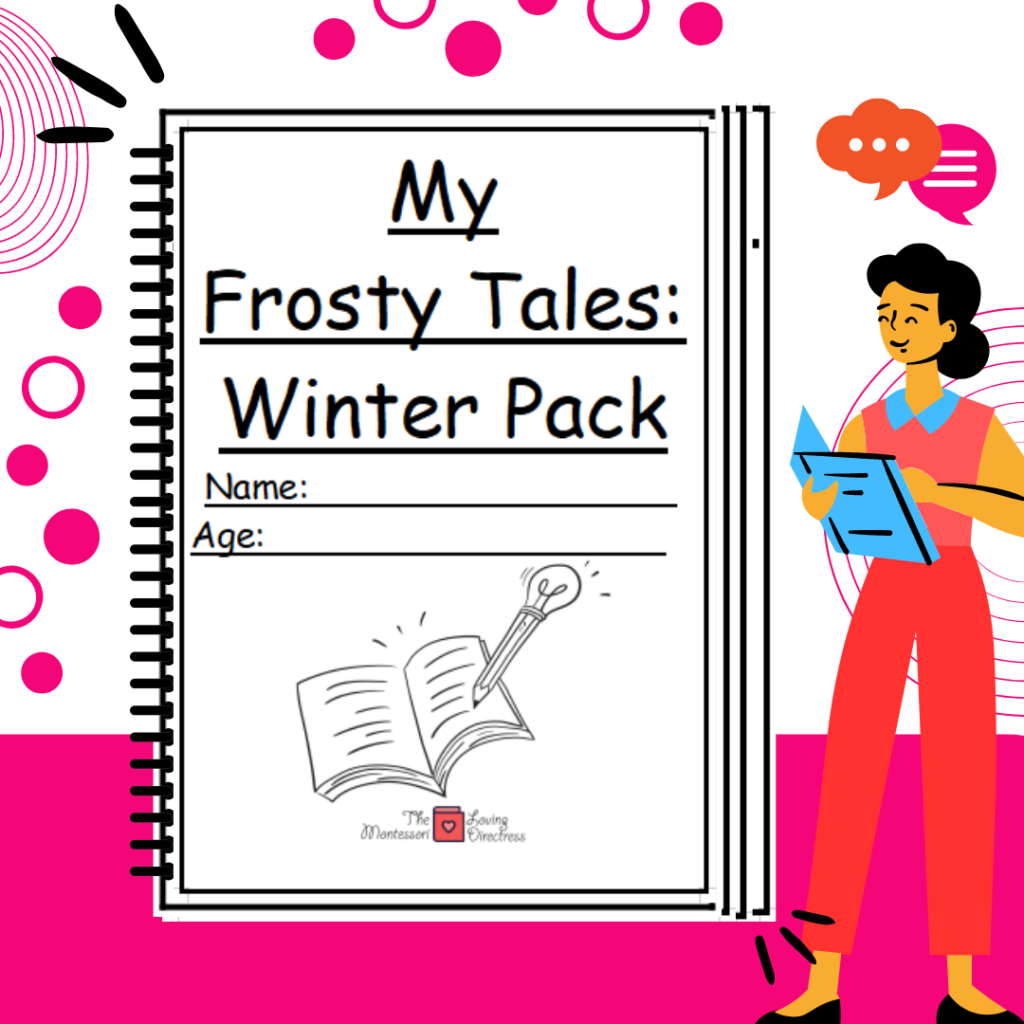
Introducing “Frost Tales: Winter Pack” – Where Imagination Meets Winter Magic
Engaging Winter Stories: Dive into the enchanting world of Frostland with our collection of 10 half-written winter tales. Each story begins with an intriguing introduction, setting the stage for snowy adventures and magical discoveries.
Unleash Creativity: Embrace the joy of storytelling by completing the captivating narratives. Every story includes a blank page, inviting children to craft their imaginative endings. Encourage creative thinking and storytelling prowess as they weave their own versions of each tale.
Artistic Expression: Illustrate the completed stories on the accompanying blank canvases. Ten opportunities for artistic expression await, allowing kids to bring their unique winter adventures to life through vibrant drawings and illustrations.
Educational and Fun: Beyond storytelling, “Frost Tales: Winter Pack” enhances critical thinking, writing skills, and artistic expression. It’s an educational resource designed to engage children in imaginative exploration and creative storytelling.
What’s Included:
- 10 half-written winter stories.
- 10 blank pages for completing each tale.
- 10 blank canvases for drawing and illustrating stories.
- An opportunity for children to become authors and illustrators of their winter adventures.
Discover the Magic: Let “Frost Tales: Winter Pack” be the gateway to a world of endless possibilities. Spark creativity, ignite imaginations, and uncover the wonders of storytelling in a wintry setting.

